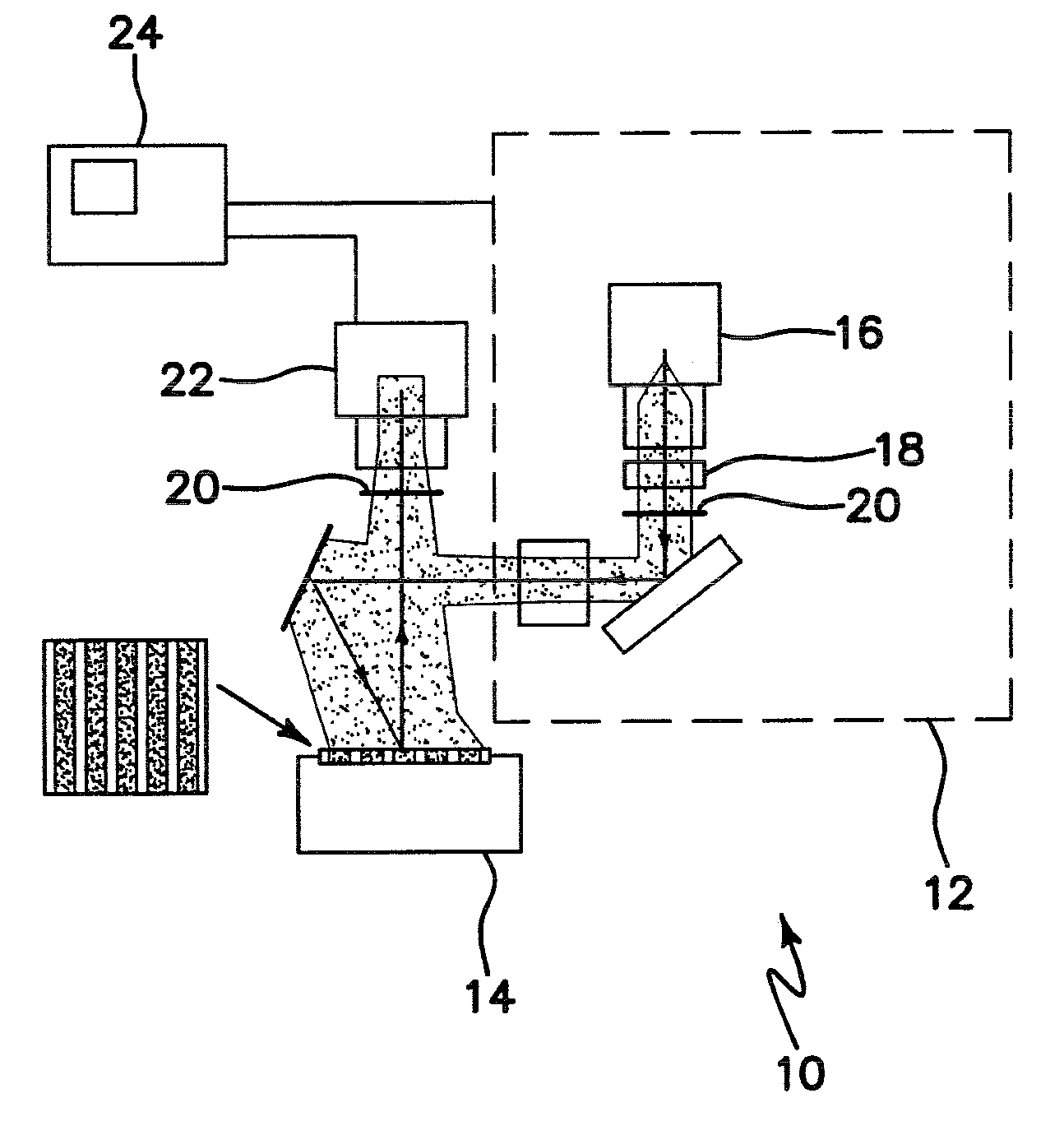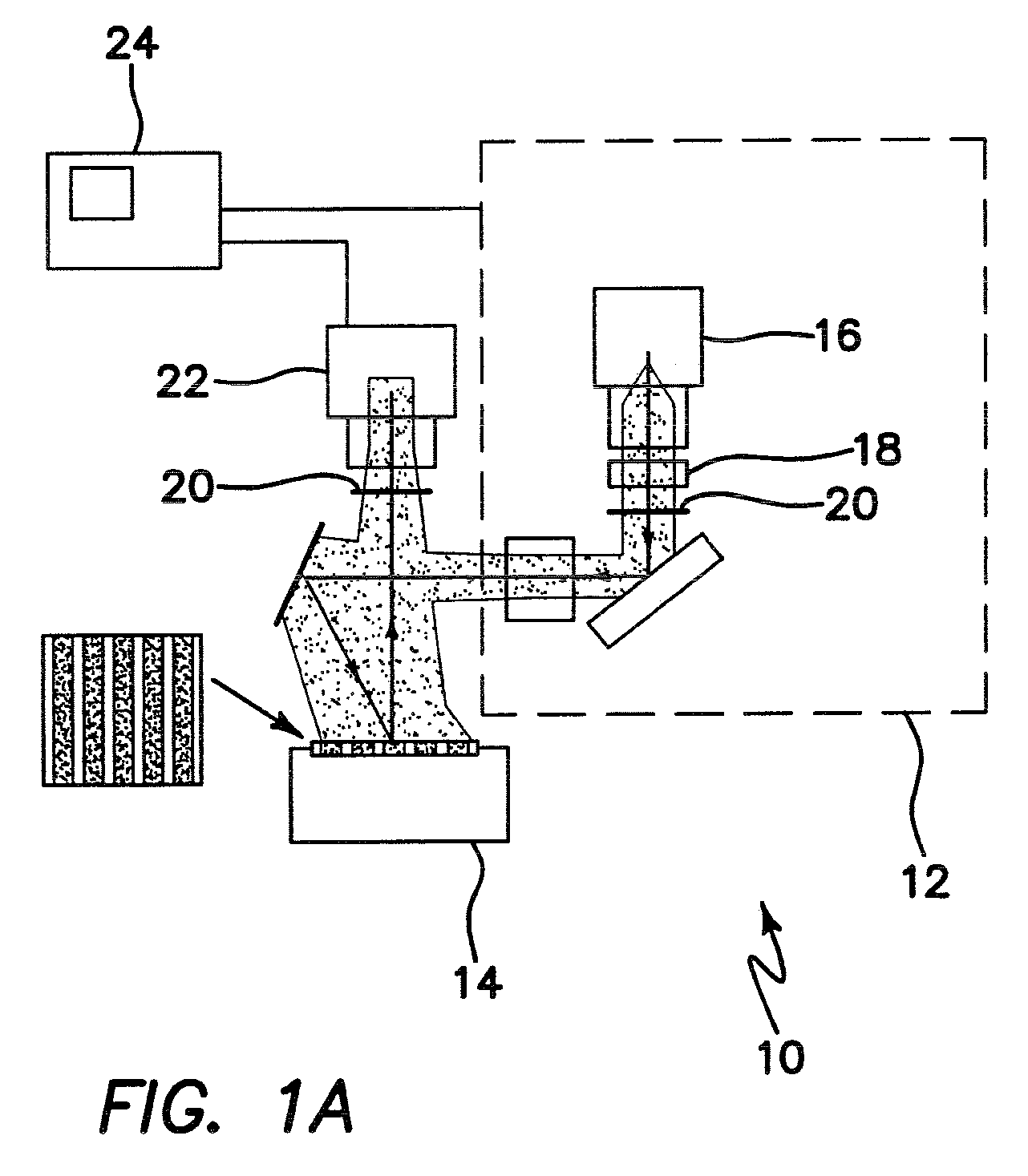Apparatus and method for widefield functional imaging (WiFI) using integrated structured illumination and laser speckle imaging
a widefield functional imaging and structured illumination technology, applied in the field of medical imaging using light, can solve the problems of only providing relative changes in hemodynamic parameters, incomplete picture of underlying mechanisms, and the absolute quantification of the magnitude and origin of cellular and molecular events remains a significant challenge, and achieves the effect of reducing motion artifacts or discomfort for patients
- Summary
- Abstract
- Description
- Claims
- Application Information
AI Technical Summary
Benefits of technology
Problems solved by technology
Method used
Image
Examples
Embodiment Construction
[0064]Quantitative characterization of tissue structure and function across spatial scales is one of the most challenging problems in medical imaging. Field of view, depth of interrogation, and resolution are critical features that dramatically impact image quality and information content. Optical methods can potentially provide a single platform for imaging biological tissues with resolution and depth sensitivity from microns to centimeters, limited by fundamental light-tissue interactions.
[0065]The broad advantage of the wide-field functional imaging (WIFI) core is that it is an integrated imaging platform capable of quantitative subsurface metabolic imaging across spatial scales. WiFI simultaneously measures tissue blood flow, biochemical composition (i.e. oxy- and deoxy-hemoglobin, water and lipid content), and molecular fluorescence in turbid tissues. It possesses sufficient spatio-temporal resolution to study both fast (i.e., ms timescale) and localized (i.e., tens of μm to mm...
PUM
 Login to View More
Login to View More Abstract
Description
Claims
Application Information
 Login to View More
Login to View More - R&D
- Intellectual Property
- Life Sciences
- Materials
- Tech Scout
- Unparalleled Data Quality
- Higher Quality Content
- 60% Fewer Hallucinations
Browse by: Latest US Patents, China's latest patents, Technical Efficacy Thesaurus, Application Domain, Technology Topic, Popular Technical Reports.
© 2025 PatSnap. All rights reserved.Legal|Privacy policy|Modern Slavery Act Transparency Statement|Sitemap|About US| Contact US: help@patsnap.com



